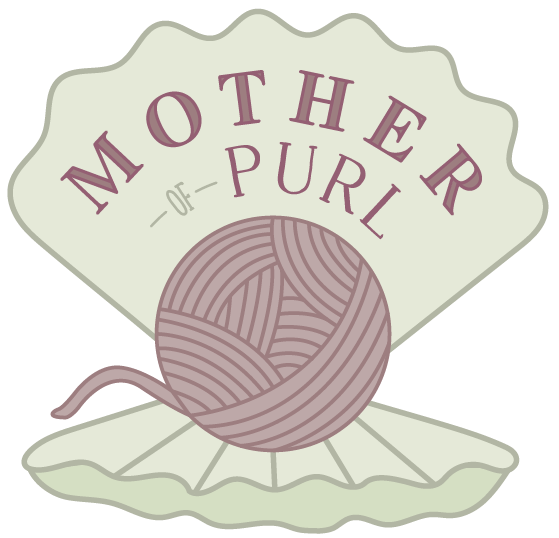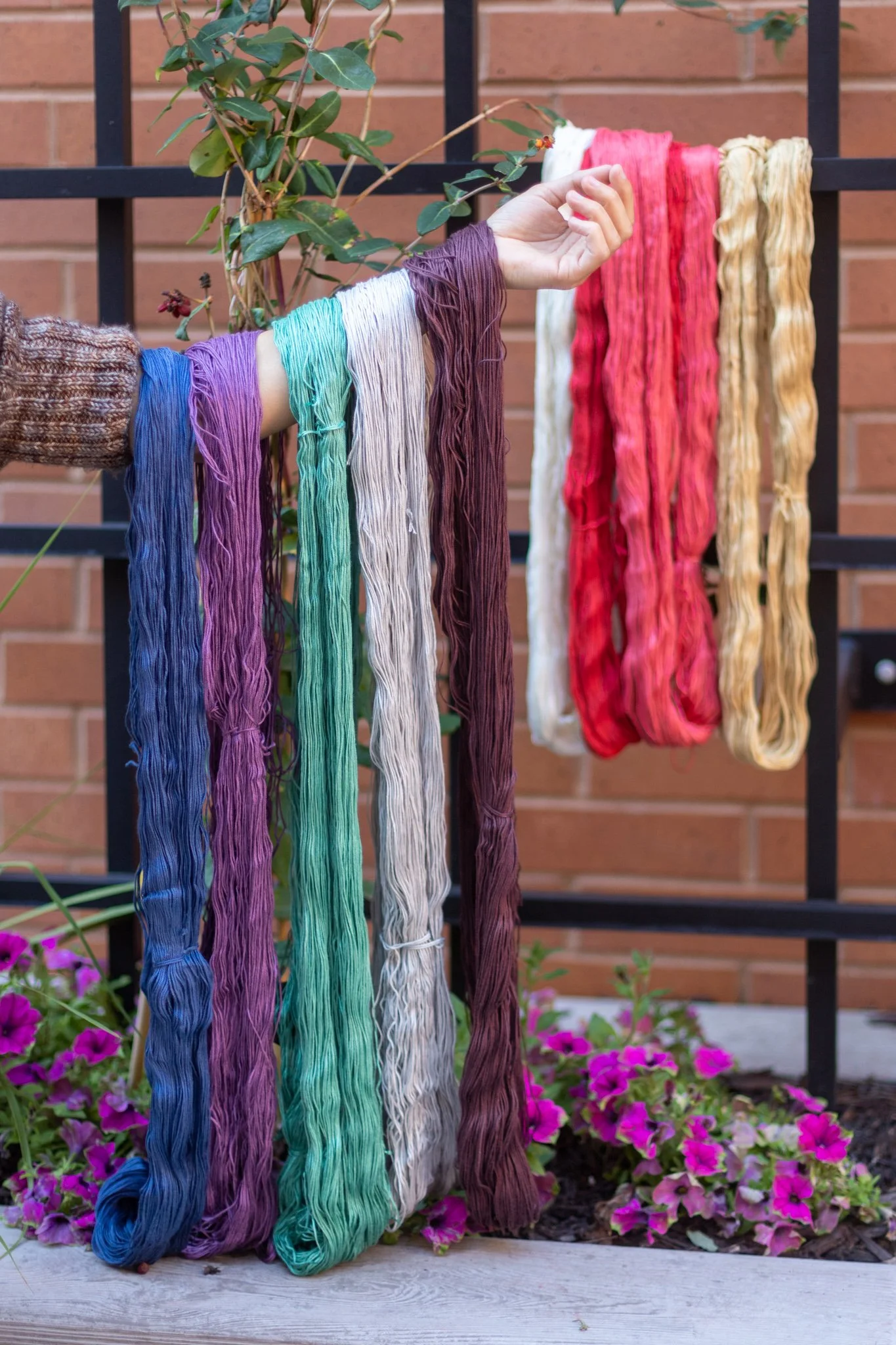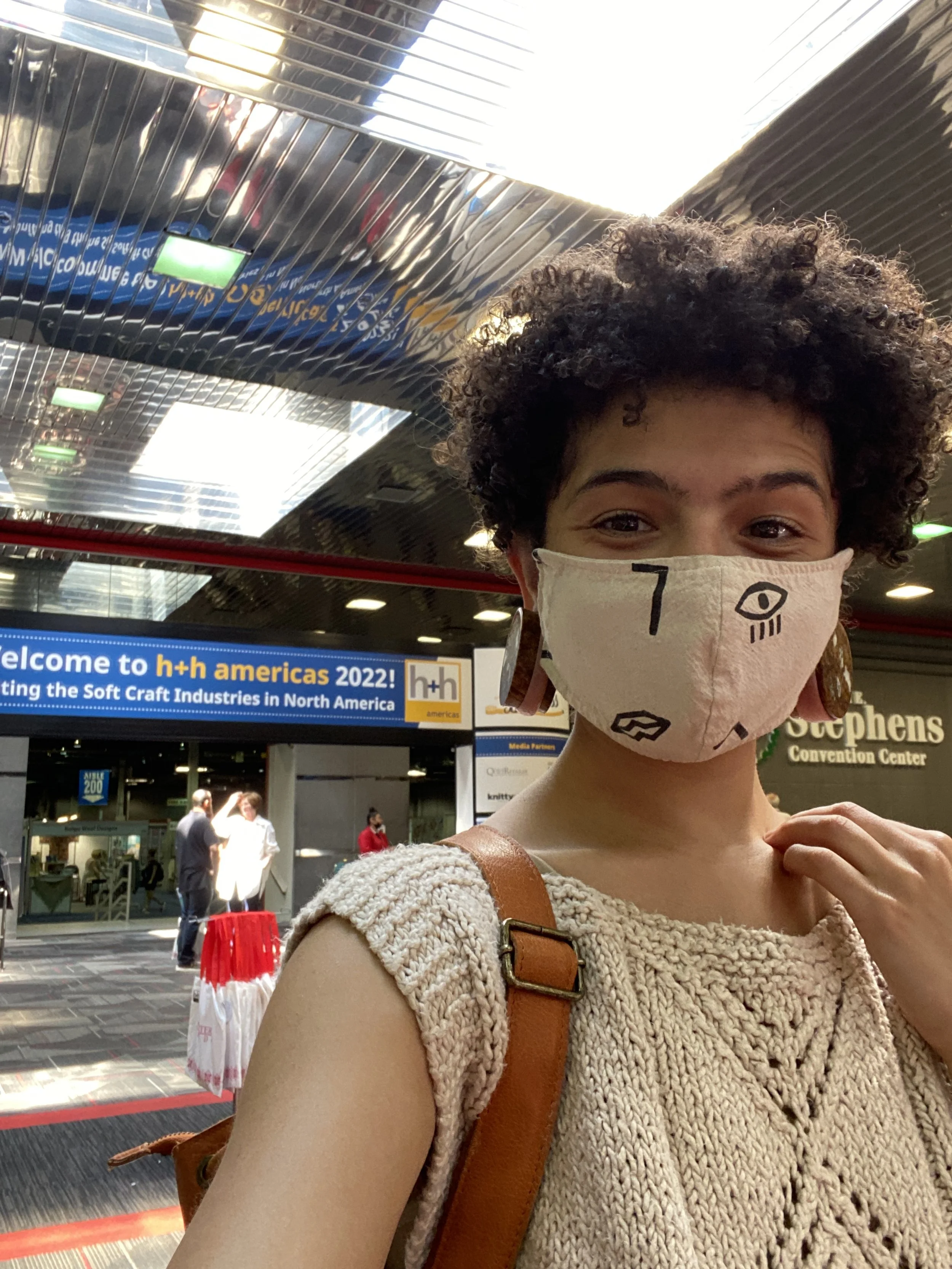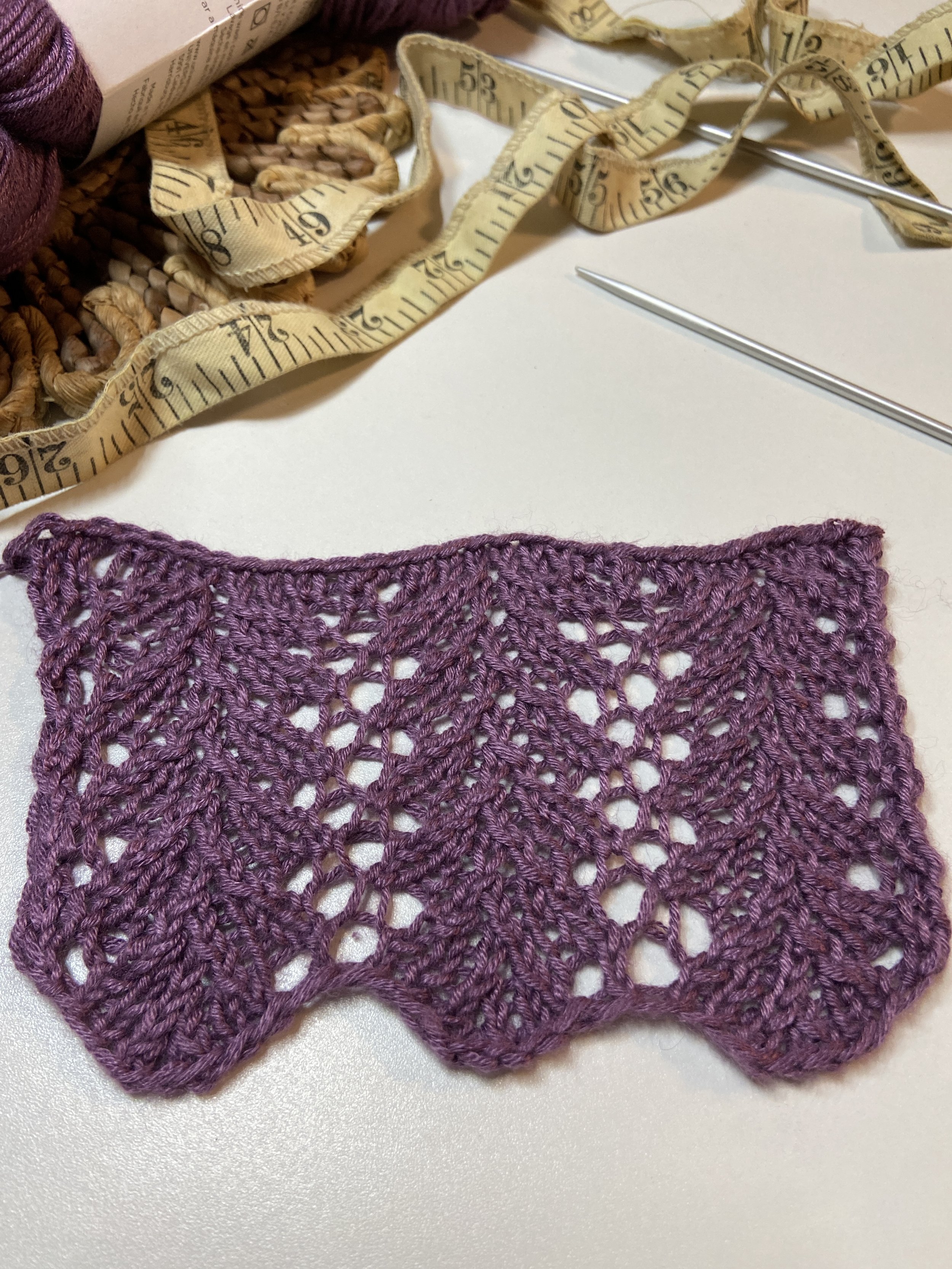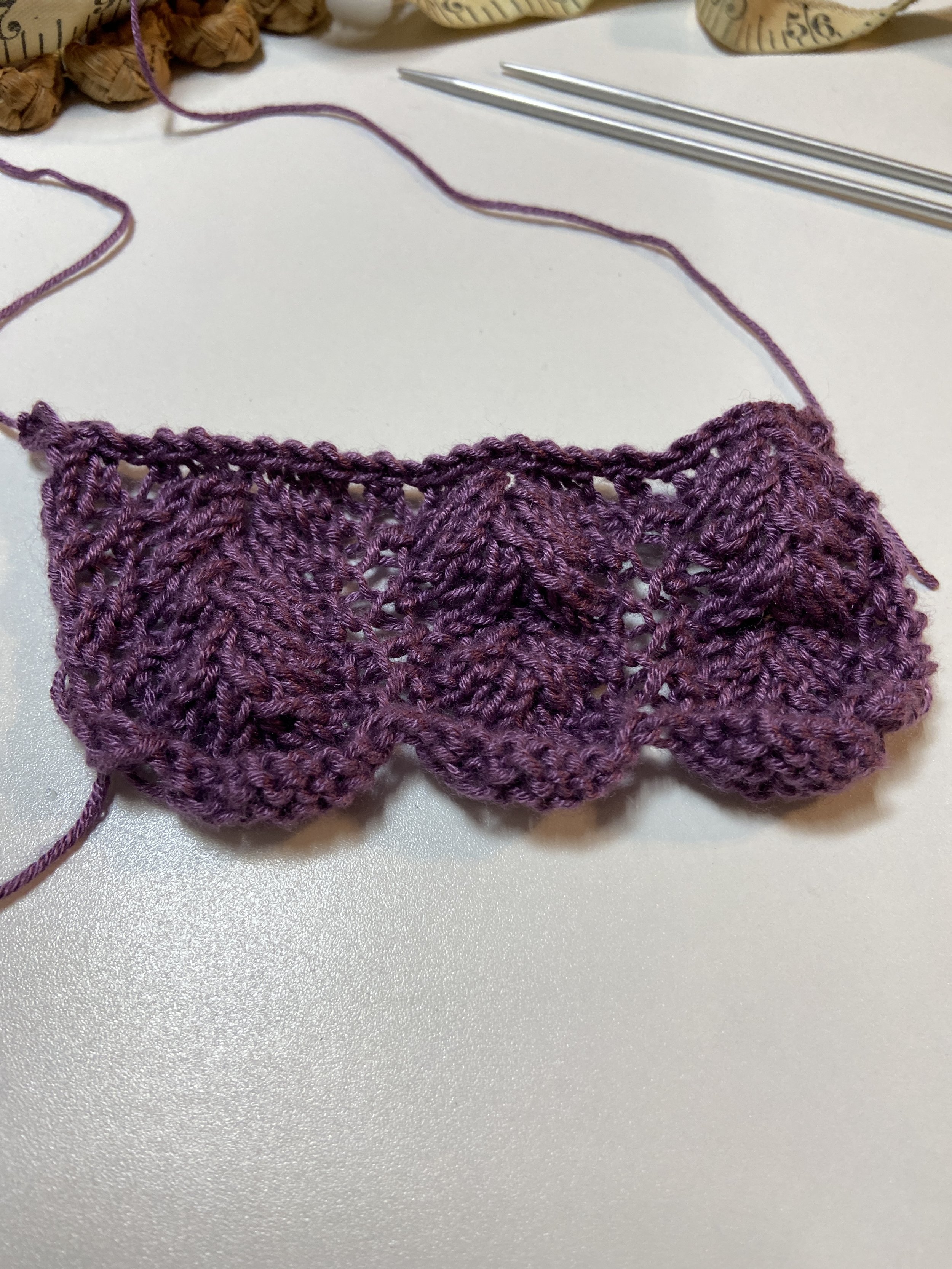Why swatch your knitting and factors in choosing the right yarns for your next knitting project.
Have you ever wondered how knitting patterns get made? Maybe you are already or want to be a knitwear designer, I think you’ll find it interesting and informative to get a look into this knitwear designers process.
All knitwear designers have their own styles, and yes, there are some standards that you expect to see from a knitting pattern when its in its finalized form. But eveyones’s process from start to finish is different.
I know, you’ve heard it before, swatches are actually really important, especially from a design perspective.
A swatch is going to help you to calculate how much yardage you need for your knitting project, figure out what size needles you’ll need, what your cast on number is based on your measurements, and in the purpose of designing, its going to give you a feel for what kind of fabrics you can make and what stitch patterns make sense for a particular yarn.
When I design, sometimes I draw first, sometimes I have the idea come in my head, sometimes I see a yarn and need to get my hands on it, needless to say the inspiration varies. But an important part of my design process is swatching. There have been times when I feel inspired and sit down with the yarn I think it’s going to be absolutely perfect for what’s in my head, and the yarn says… “ I know you ain’t talkin to me!”
If I didn’t Swatch, I wouldn’t have known. There have been times when I thought two colors were going to look great together and then I make up a little sample and it’s absolutely hideous, or makes a weird shape that looks like something you were not intending…
Choosing the right yarn for your knitting pattern can make or break your pattern. Some designs need high contrast, some are all about the texture, and arguably the most important factor, Drape.
Do you ever come across a yarn you absolutely drool over, and know I HAVE to make something but don’t know what? In that case, the first thing I do is start a conversation with the yarn, get to know what makes that yarn special, and that is done by swatching.
*Disclosure: I only recommend products I would use myself and all opinions expressed here are my own. This post contains affiliate links that at no additional cost to you, I may earn a small commission if you buy as a result of clicking this link. thank you.
This past June I got to attend my first ever fiber trade show! I know shocking, I haven’t been to Rhinebeck or any of the other festivals. (in September of this year I did make it to my first Wisconsin sheep and wool festival)
Back in June, at the H+H trade show in Chicago, which is more like a business event than a fiber festival (I Loved every minute!) I got to meet some fiber industry colleagues, network with yarn and notions companies, set up and find new connections for a local yarn store, and I got to touch ALL of Universal Yarn’s new yarns, see them all in person, and then I got to pick out in person which yarns I would like to design with. 😮
While I was touring the yarns from Universal Yarn I would fall in love and reach out for a color or a fuzz factor, and as I turned over the ball band I noticed I kept gravitating towards skeins that all had something really special in common.
Cashmere! 🤤
What can I say, I have taste. 🤷
Cashmere comes from the downy undercoat of the Kashmir goat that historically originated in the mountainous region of Kashmir in the north of the Indian subcontinent. The hair is grown by the goats in winter and shorn in spring.
Cashmere is similar to wool but is lighter in weight, softer and warmer. It’s known for its luxurious feel and insulating properties. Cashmere is very soft (down to 14 microns per hair!) and has a slight halo effect similar to Angora or mohair. It is a biodegradable natural fiber, that is hardwearing and lasts a long time.
So, those yarns I got inspired by! Let’s get into it!
First up,
Cashmere Lusso
Specs:
Fine Weight
2 ply
one ply is virgin cashmere, and the other ply is recycled cashmere from sweaters with similar color tones which makes the color depth rich.
50 gr/ ball
246 yards/ ball
Hand wash
Needle Size Size 2 used for swatch.
I treated this yarn as a fingering weight because it has a bit of a halo that makes the yarn seem a little bigger than the ball band measurement.
First impressions:
I wanted to make the smallest swatch possible because I wanna save this yarn for something special. Omg it was such a dream to work with- so soft and springy.
It would be an absolute privilege to make a sweater out of this, and I am imagining it would look great in something like a textured rib on a menswear style henley. The fabric feels dense, but light at the same time!
It’s more likely however that I’d make something super soft to wrap around my neck because, the price point is pretty high. at $48 /ball.
I’ve been thinking cowls are convenient to knit in the round but, scarves and shawls are just more practical for warmth. thoughts?
If you can afford it, you won’t be disappointed. this yarn is truly special. I want it in my hands at all times.
It’s made from 100% cashmere - 50% virgin and and 50% recycled cashmere
The recycled aspect is different and not something that is commonly found in a yarn. and A+ for recycling. The colors read as a solid, but the way they plied this yarn makes it, up close, a more nuanced color, something really unique. The recycled ply is made from sweaters in a similar hue to the virgin ply, and that adds depth and variation to the that can be seen open closer inspection. This yarn comes in 15 solid colors.
Truva
Specs:
Light Weight
2 ply
50 gr/ ball
164 yards/ ball
Hand wash
50% Cashmere 50% Cotton
Size 4 needles used for swatch.
The color variation is really subtle. It has a heathered appearance, and it looks like tiny plys that are distinctly different but in the same color family, quite fun.
I chose to work my swatch in the drop stitch open fabric because I was dreaming about what I would make with this yarn. I think it would be really suitable for summer garments that are elevated, fun, and fresh. - a drop stitch tee would be a quick knit and have a lot of interesting factors. keep your eyes peeled for developments on that, because this yarn has me inspired! (heart eyes)
This yarn is soft, and has drape but not so much that it would leave a garment unstructured. It would be great for transitional or layering garments, like a sweater vest. the yarn comes in 7 different colors that work up well in simple stitches.
Each $30 ball comes already wound so it is ready to cast on your next project.
Ravello
Specs:
Fine Weight
single ply
50 gr/ ball
207 yards/ ball
Hand wash
75% Cotton, 16% Extrafine merino, 9% recycled Cashmere
Size 2 needles used for swatch.
I treated this yarn like a lace weight or a light fingering weight because it is very lofty and has a divine halo that would make open work really bloom.
We’re back with that recycled cashmere, and even just a touch of it really makes the yarn stand out as a luxury yarn.
The color that I tried was called soft clay, and it was a gentle pink with little hints of orange. the color made the fabric really call for something delicate and pretty so I chose a lace border stitch.
I would love to try one of the other 16 colors in a more neutral tone and see where the yarn wants to go.
Ravello would be so suitable for accessories that are feminine and flirty, as borders on garments, something where you wanted a little extra sparkle. It definitely has that next to skin softness, so I was thinking about a warmer season lacy scarf or a hair bow.
I don’t usually work with singly ply yarn so this was a new one for me, and I want to get my feet wet to see how hardwearing it would be.
I could see it in a loose fitting delicate garment with a gentle feel.
Like I said I’d be curious to use this in a color that’s not as traditionally femme and see if that vibe prevails.
The price has just been reduced on this yarn to $14.50/ ball (from $19/ball) Which makes it really attractive as a yarn to try out if you like making accessories with really fine yarn.
Magnolia
Super Fine Weight
Fingering
100 gr/ ball
361 yards/ ball
Machine wash cold, tumble dry low heat.
95% Modal, 5% Cashmere
Plied yarn
Size 2 needles used for swatch.
The first thing I noticed about this yarn is that it was heavy and ridiculously soft.
I was absolutely amazed that it was a plant fiber. Modal is made from the pulp of beech trees. The fiber has a sheen similar to silk, and a softness to rival it.
Because it’s a plant fiber the fabric you can make with this yarn is very breathable, and a big plus, machine washable.
I have a strong desire to to really understand fabric and fibers and the way that they develop and exhibit different characteristics- so I made multiple swatches in this yarn because-
I couldn’t keep my hands off of it.
I was unfamiliar with the way modal would work up as a knit fabric.
My findings are as follows:
Whatever type of stitch pattern you decide to knit It’s going to be flat whatever you do, and I mean flat like a sheet of paper. This is a characteristic I have not before seen in a yarn, which opens up a lot of possibilities for very fine fabrics that have a lot of drape and their main purpose is to be a flat surface. Knitting before Modal, I thought of as a 3 dimensional plane, but I think modal can really transform the way I think about knit fabric, it's less textural. Takes some getting used to, but it is a fun exercise in creativity.
I was surprised by the way that that yarn took steam. my swatches all grew by many inches! they just flattened right out.
(from right to left, Photo after steaming, Photo Before steaming, Other stitch pattern swatches)
I would like to make a tee shirt in a minimalist style or the coziest camisole for sleeping and lounging around the house in. honestly, with the glorious shine this yarn has, any garment made with this could be dressed up and taken on a night out. I’d also like to play with the concept of flat cables, on the edges of shawls and garments.
I think those who have designed shawls in this yarn are on the right trackbecause the fabric really becomes flat, and has drape for days!
Now that I know this type of fabric is possible, it opens up a door to ideas I never knew existed, I don’t have a design solidifying quite yet, but that doesn’t mean its not on its way.
Magnolia comes in 15 colors and is $17 a skein.
Photo Credit: @kt.simmons.uvin
